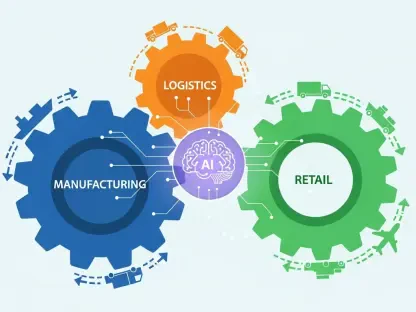In a significant move poised to redefine the way artificial intelligence interacts with blockchain technology, BitSeek has introduced its revolutionary DeLLM protocol. This development marks an unprecedented shift in AI infrastructure tailored for the evolving Web3 ecosystem. Centralized AI models have long been the mainstay, often dominated by large tech corporations, but BitSeek’s offering carves a path toward a more democratized and user-centric framework, providing both users and developers with newfound control over their data and computational outcomes. By navigating away from traditional centralized models toward a decentralized approach, BitSeek positions itself at the forefront of this transformative intersection between AI and blockchain.
Decentralizing AI: A New Frontier
BitSeek’s approach introduces a novel dimension to AI by decentralizing its operations through the integration of distributed computing, blockchain-native governance, and privacy-focused infrastructure. This system provides a stark contrast to existing centralized models where data control is often restricted to corporate interests. BitSeek’s innovation allows users and developers unprecedented liberty in data management and computation processes, placing control back into the hands of those who generate and interact with the data. Through the combination of blockchain technology and an expansive network of distributed nodes, BitSeek crafts an AI ecosystem where decentralization takes precedence, fostering an environment of inclusivity and transparency.
The implementation of a blockchain-governed model ensures enhanced security and user privacy, essential components in today’s AI landscape. By decentralizing power away from major tech conglomerates, BitSeek sets a benchmark for user autonomy. This strategic shift not only disrupts the existing AI paradigm but also builds a foundation capable of supporting more independent and innovative applications. Users and developers can now confidently engage with this ecosystem, knowing that their data and privacy are preserved while contributing to a more equitable economic model, where rewards are fairly distributed across participants within this network.
Platform Architecture and Core Components
The architecture that underpins BitSeek’s infrastructure is designed to keep decentralization at its core, functioning through an extensive network of globally distributed nodes. This sprawling network facilitates Blockchain Model-Context-Protocol (MCP) operations and a comprehensive data DAO, integral in driving the platform’s decentralized AI capabilities. Through these components, BitSeek delivers on its promise of accessible decentralized LLMs and supports seamless on-chain interactions, enabling new avenues for AI within the Web3 sphere. This structural paradigm not only enhances AI’s adaptability but also reinforces decentralized principles across the entire platform.
The network’s distributed nature allows BitSeek to maintain a highly scalable and efficient ecosystem while adhering to privacy-centric architecture. This infrastructure seamlessly integrates across various blockchain ecosystems, thus expanding the potential for interoperability and broader application deployment. With decentralized LLMs forming the basis of their architecture, users are liberated from the confines of centralized oversight, and developers are equipped to build applications that resonate with the ethos of transparency and security inherent in decentralized design. BitSeek’s platform, therefore, stakes a claim in reimagining AI’s role and integration within the decentralized web.
Model Atomization and User Privacy
Central to BitSeek’s decentralized AI initiative is its model atomization architecture, which innovatively allocates open-source LLMs like DeepSeek R1 and Llama 3 across its network. This approach eliminates the traditional need for centralized hosting, allowing users to exercise complete dominion over their data. By intertwining blockchain capabilities with a distributed computing framework, BitSeek ensures that its AI services remain robust while safeguarding user privacy. Such a model challenges traditional boundaries, empowering users not only to own but also protect and monetize their data securely.
Privacy, a linchpin in BitSeek’s strategy, is preserved without compromise through this decentralized approach. By atomizing AI models and allowing them to function across a networked architecture, users can confidently engage knowing their information remains unexposed to centralized entities. The model endorses an era where user privacy is at the forefront of AI interactions, removing the perennial concerns associated with data surveillance and unauthorized access. This approach significantly upsets conventional AI models, facilitating a transition toward systems where user data is considered sovereign, and participants receive fair acknowledgment and reward within the ecosystem.
User Control and Monetization Opportunities
Central to BitSeek’s ethos is the commitment to user control and the preservation of privacy, ensuring individuals retain ownership over the data they generate. Through this empowerment, users can maintain the confidentiality of their data or explore monetization avenues using DataDAOs, a method that both challenges and enhances the existing landscape of AI development. This model of operation not only alleviates centralized dominance over user data but also promotes an equitable reward system for active participants within the ecosystem, illustrating a transformative step forward.
Such shifts fundamentally alter the dynamic between users and their data, pioneering new pathways for individuals to reap tangible benefits from their digital footprints. BitSeek’s infrastructure allows data security without sacrificing potential economic returns, with the decentralized architecture fostering a community of shared interests and mutual rewards. This balance between control, privacy, and monetization disrupts traditional paradigms where corporate oversight reigns supreme, establishing a more inclusive and user-friendly framework. This is a significant stride toward a future where users no longer have to compromise between exploiting the utility of AI and safeguarding their privacy.
Censorship Resistance and Incentive Structure
BitSeek’s infrastructure rigorously upholds a censorship-resistant environment where user data is shielded from prying eyes, be they corporate or governmental. Its decentralized architecture ensures that data and computational power reside with dispersed node operators, further strengthening this resistance. These operators are incentivized with token rewards for contributing computational resources, fostering a vibrant ecosystem that thrives on decentralized principles. This reward structure not only galvanizes node operators but also entrenches the network’s robustness, ensuring it remains a bastion of reliability and privacy.
The incentive model deployed by BitSeek serves as a cornerstone for its sustainable and decentralized ecosystem. By rewarding participants through a structured and transparent token system, the network encourages an ongoing commitment to contributing computational prowess. This collaborative approach creates a symbiotic relationship where both the platform and its contributors flourish, as the decentralized infrastructure gains from enhanced computational resources while individuals benefit economically. The resistance to censorship underscores a vigilant commitment to privacy and decentralization, setting an industry standard for other players to emulate in the quest for a more secure AI landscape.
Implications for Web3 Development
In a groundbreaking move set to redefine the interaction between artificial intelligence and blockchain technology, BitSeek unveils its innovative DeLLM protocol. This development signifies an unprecedented shift in AI infrastructure, tailored specifically for the burgeoning Web3 landscape. Traditionally, centralized AI models have been the norm, largely dominated by major tech companies. BitSeek’s DeLLM protocol challenges this status quo by offering a democratized and user-focused framework. This shift empowers both users and developers with greater control over their data and the outcomes of their computational processes. By steering away from conventional centralized models, BitSeek places itself at the forefront of the transformative intersection between AI and blockchain. This transition towards decentralization heralds a new era where AI technology can be leveraged in a way that aligns more closely with the principles of transparency, security, and user autonomy, ultimately reshaping the digital landscape and inspiring innovation across sectors.









